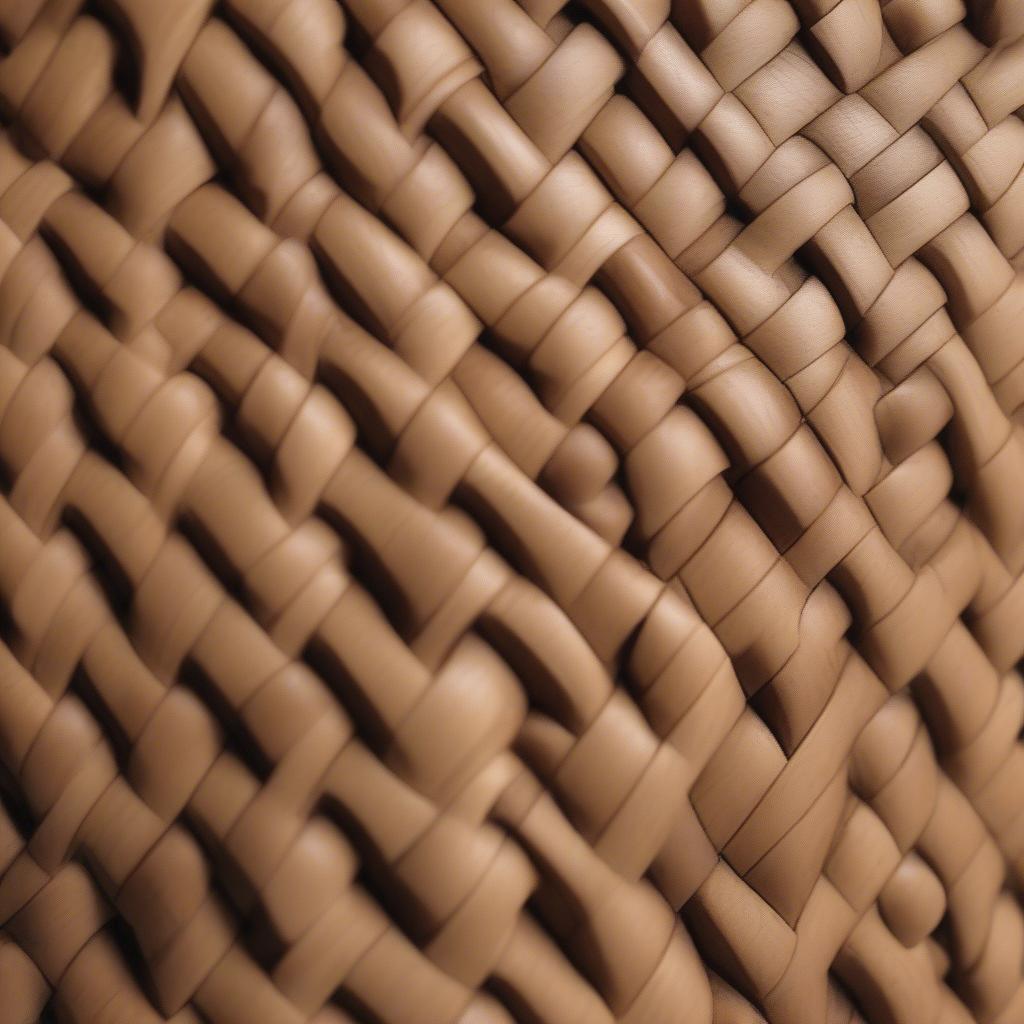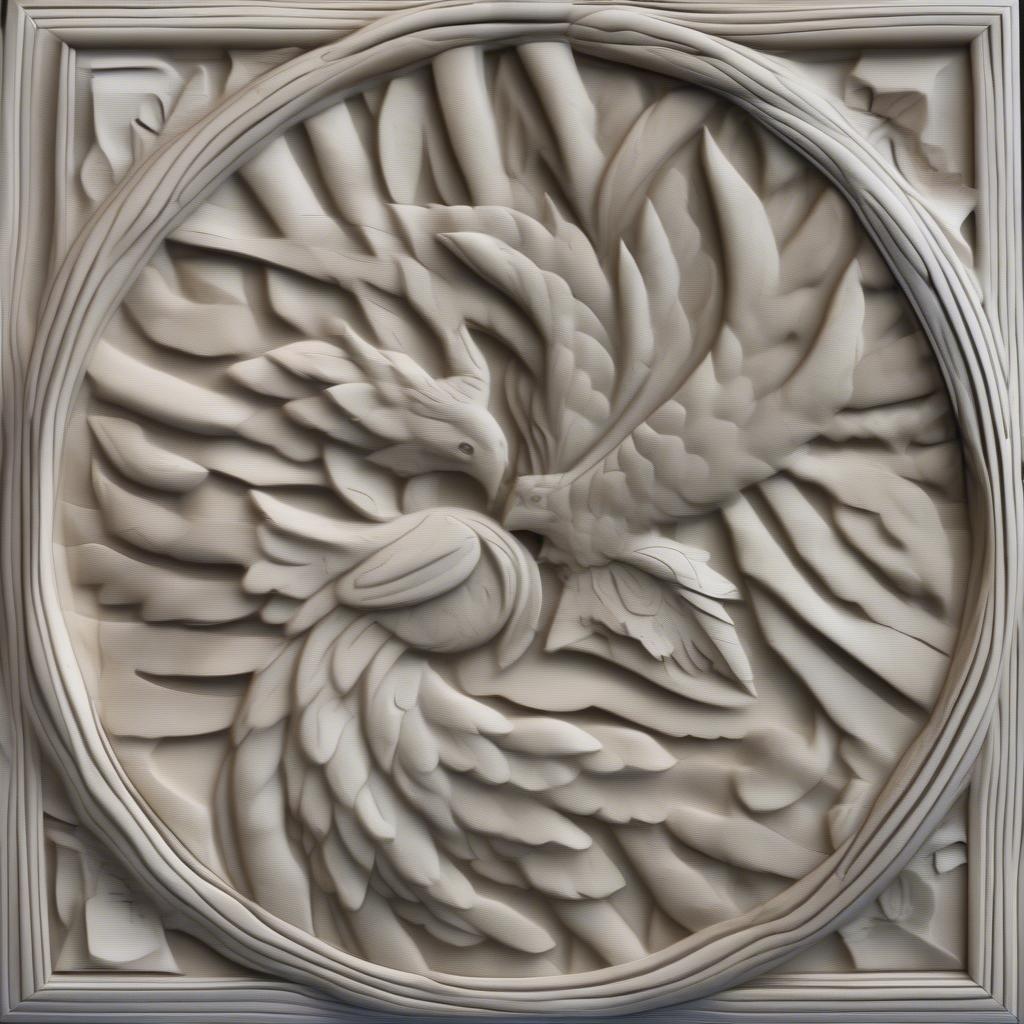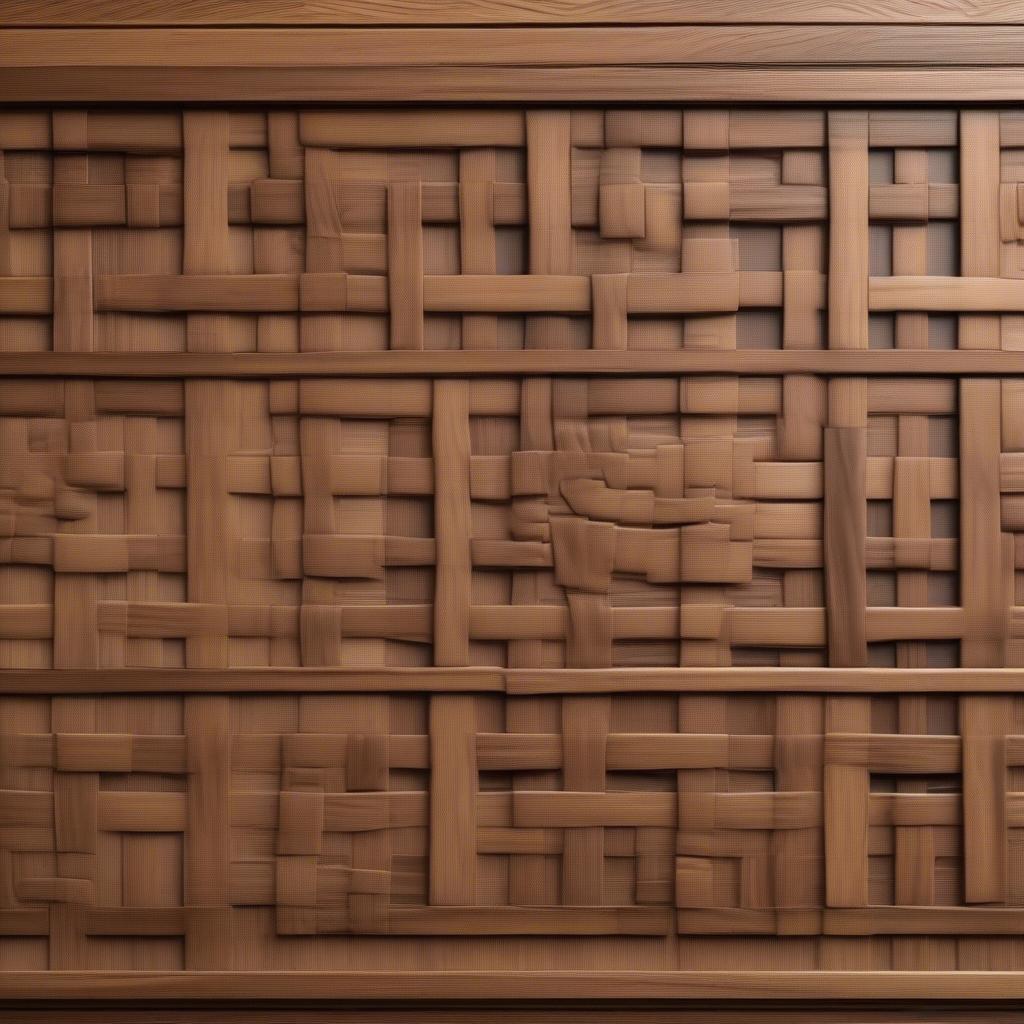Basket Weaving
Mastering Shading for Basket Weave Carving
Shading For Basket Weave Carving is a crucial technique that elevates your woodworking projects from simple patterns to realistic, textured masterpieces. Understanding how to manipulate light and shadow within the basket weave design adds depth and dimension, transforming a flat surface into a visually captivating piece.
Understanding the Basics of Basket Weave Carving
Before diving into shading, let’s review the fundamental basket weave pattern. This classic design mimics the interlacing of woven fibers, creating a checkered effect. Typically carved into wood, the basket weave pattern consists of alternating raised and recessed squares, resembling the over-and-under structure of a woven basket. The beauty of this pattern lies in its simplicity and versatility, making it suitable for various projects from furniture to decorative boxes.
 Basic Basket Weave Carving Pattern
Basic Basket Weave Carving Pattern
Shading Techniques for Basket Weave Carving
Shading is the art of using light and shadow to create the illusion of depth and form. In basket weave carving, shading enhances the interwoven appearance, making the pattern pop. Here are some effective shading techniques:
- Directional Light Source: Imagine a light source illuminating your carving. The areas closest to the light will be the brightest, while those further away or hidden will be darker. This principle guides your shading, creating a consistent sense of depth.
- Gradual Transitions: Avoid abrupt changes in shading. Instead, aim for smooth transitions from light to dark. This creates a more natural and realistic look, mimicking how light interacts with a real woven basket.
- Undercutting: This technique involves carving away wood beneath the edges of the raised squares, creating deeper shadows and enhancing the three-dimensional effect. Undercutting adds a dramatic touch, making the pattern stand out.
- Highlighting: Using a lighter wood stain or paint on the raised areas accentuates the contrast between light and shadow, further emphasizing the woven texture.
 Shading Techniques for Basket Weave Carving
Shading Techniques for Basket Weave Carving
Why is Shading Important in Basket Weave Carving?
Shading for basket weave carving isn’t just about aesthetics; it’s about bringing the pattern to life. It transforms a simple geometric design into a visually dynamic element. Without shading, the basket weave can appear flat and lifeless. With proper shading, it becomes a focal point, adding depth and texture to your woodworking piece.
What tools are needed for shading basket weave carving?
The tools you need will depend on your chosen shading technique. For undercutting, you might use chisels or carving gouges. For highlighting, you’ll need paintbrushes and appropriate stains or paints.
How can I practice shading techniques?
Practicing on scrap wood is essential. Start with simple designs and gradually experiment with different shading methods. Don’t be afraid to make mistakes; it’s all part of the learning process.
Advanced Shading for Basket Weave Carving
Once you’ve mastered the basic techniques, you can explore more advanced shading methods. These might include incorporating multiple light sources, creating more complex shadow patterns, and experimenting with different finishes to enhance the overall effect.
 Advanced Shading for Basket Weave Carving
Advanced Shading for Basket Weave Carving
“Shading is the key to unlocking the true potential of basket weave carving. It’s the difference between a good carving and a truly exceptional one,” says renowned woodcarver, Amelia Blackwood.
In conclusion, shading for basket weave carving is essential for creating realistic and visually appealing woodworking projects. By mastering the techniques outlined above, you can transform your carvings from flat patterns to dynamic, textured masterpieces. Remember to practice and experiment to find the shading style that best suits your artistic vision.
FAQ
- What is the easiest shading technique for beginners? Directional lighting is a good starting point.
- Can I use paint for shading? Yes, paint can be used for highlighting and creating shadows.
- What type of wood is best for basket weave carving? Basswood and butternut are popular choices due to their softness and workability.
- How deep should I carve for the basket weave pattern? The depth depends on the overall size and design of your project.
- What is undercutting in carving? Undercutting involves carving beneath the edges to create deeper shadows.
- Can I combine different shading techniques? Absolutely! Experimenting with different techniques can create unique and interesting effects.
- Where can I find more resources on basket weave carving? Online forums and woodworking communities are excellent resources.
Need help? Contact our 24/7 customer support hotline: +84 388 951 999 or visit us at Hanoi, Vietnam, or Tech Avenue, Suite 12, San Francisco, CA 94105, USA.
